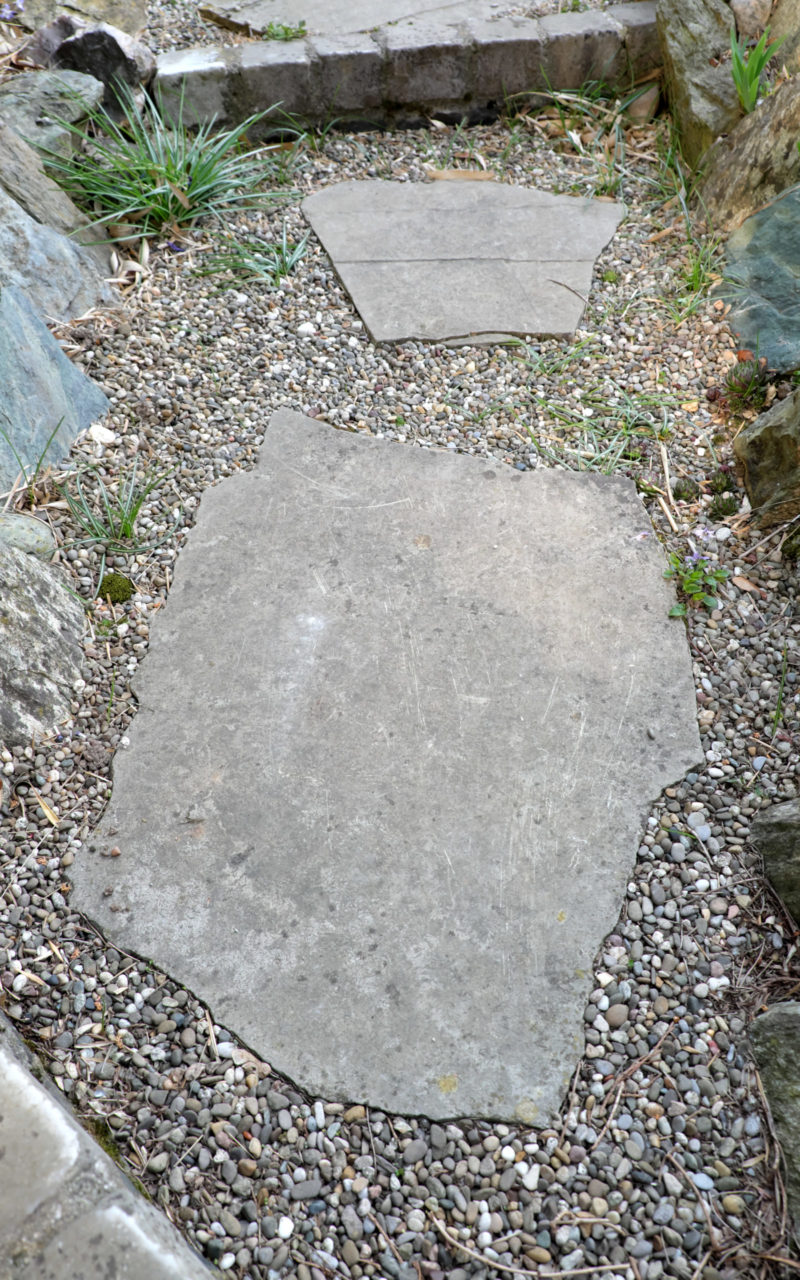Hommage à Joseph Beuys – Mountain King (Tunnel) 2 Planets, 1958 – 1961 (Cast 1971)
This work by Joseph Beuys is located in the Städel Museum. It is a two-part bronze work.
The title already reveals how complex the possible interpretations of this work can be.
The two-part bronze casting consists of a cylindrical form that strongly resembles a head, a crown or a head with a crown, and a very amorphous form that has references to a torso, but also to a mountain landscape. One of Beuys‘ statements about this work concerns the relationship between man and nature. This work seems to me like an archaeological find, an excavation, the grave of a king.
At the beginning of 2000, I designed the back garden of our house. I laid out the path on several levels in the form of steps, and the excavated earth was piled up in another place to form a hill. Finally, I laid slabs of quarry marble in a gravel bed in the depressions of varying depths. When I laid two slabs at the deepest point and looked at the result, I could hardly believe my eyes. There he suddenly was again in front of me, the Mountain King by Joseph Beuys, which I had seen many years before in the Städel. This experience is deeply etched in my memory.
When I received the email for the Open Call Hut ab – Kopf an! Call, an action to commemorate Beuys‘ 100th birthday, it was very quickly clear to me that I would submit a photo of the garden path with these marble slabs to this project. Here is my personal comment in the event.
Even though I myself represent a completely different art movement as a concrete artist, I have always felt very deeply connected to Joseph Beuys.
Hommage à Joseph Beuys – Bergkönig (Tunnel) 2 Planeten, 1958 – 1961 (Guss 1971)
Diese Arbeit von Joseph Beuys befindet sich im Städelmuseum. Es ist eine zweiteilige Bronzearbeit.
Der Titel verrät schon, wie vielschichtig die Interpretationsmöglichkeiten zu dieser Arbeit sein können.
Der zweiteilige Bronzeguss besteht aus einer zylindrischen Form, die stark an einen Kopf, eine Krone oder einen Kopf mit Krone erinnert und eine sehr amorphe Form, die Bezüge zum Torso, aber auch zu einer Berglandschaft hat. Eine der Aussagen von Beuys zu dieser Arbeit betrifft das Verhältnis von Mensch zur Natur. Diese Arbeit wirkt auf mich wie ein archäologischer Fund, eine Ausgrabung, das Grab eines Königs.
Anfang 2000 gestaltete ich an unserem Haus den hinteren Garten. Den Weg habe ich auf mehreren Ebenen stufenförmig angelegt, der so entstandene Erdaushub wurde an anderer Stelle zu einem Hügel angehäuft. In den unterschiedlich tiefen Senken habe ich zum Schluss in einem Kiesbett Platten aus Bruchmarmor verlegt. Als ich an der tiefsten Stelle zwei Platten legte und mir das Ergebnis betrachtete, traute ich meinen Augen kaum. Da lag er plötzlich wieder vor mir, der Bergkönig von Joseph Beuys, den ich viele Jahre zuvor im Städel gesehen habe. Dieses Erlebnis hat sich tief in mein Gedächtnis eingebrannt.
Als ich die Mail zu dem Open Call Hut ab – Kopf an! Aufruf, eine Aktion zu Gedenken an Beuys 100. Geburtstag erhalten habe, war mir sehr schnell klar, dass ich zu diesem Projekt ein Foto von dem Gartenweg mit diesen Marmorplatten einreiche. Hier ist mein persönlicher Kommentar in dem Event.
Auch wenn ich selbst als konkret arbeitender Künstler eine komplett andere Kunstrichtung vertrete, fühle ich mich Joseph Beuys gegenüber schon immer sehr tief verbunden.





